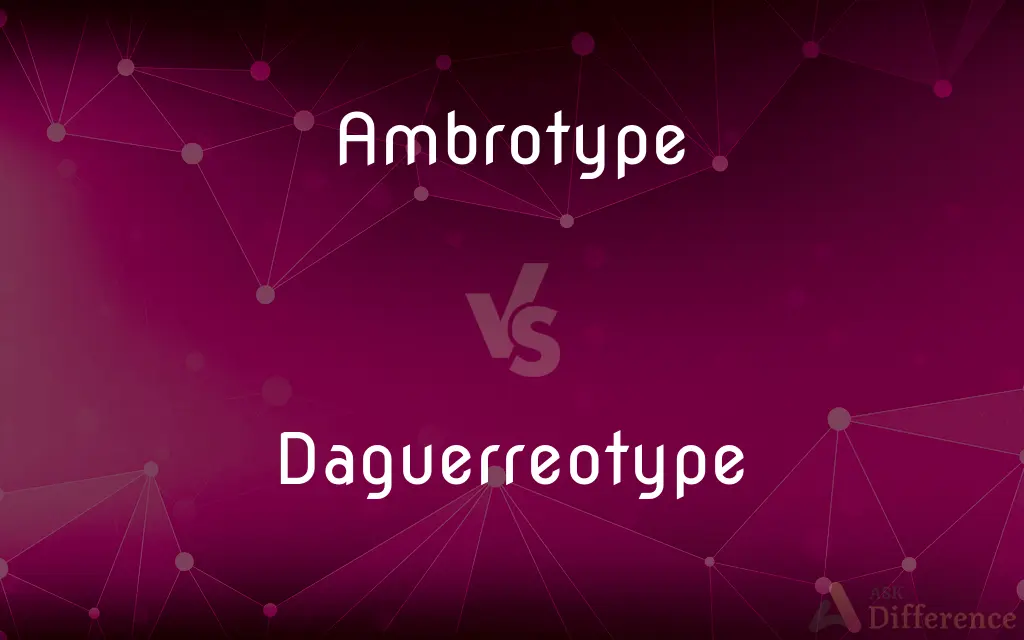Ambrotype vs. Daguerreotype — What's the Difference?

Difference Between Ambrotype and Daguerreotype
ADVERTISEMENT
Compare with Definitions
Ambrotype
The ambrotype (from Ancient Greek: ἀμβροτός — “immortal”, and τύπος — “impression”) also known as a collodion positive in the UK, is a positive photograph on glass made by a variant of the wet plate collodion process. Like a print on paper, it is viewed by reflected light.
Daguerreotype
Daguerreotype ( (listen); French: daguerréotype) was the first publicly available photographic process; it was widely used during the 1840s and 1850s. "Daguerreotype" also refers to an image created through this process.
Ambrotype
An early type of photograph made by imaging a negative on glass backed by a dark surface.
Daguerreotype
An early photographic process with the image made on a light-sensitive silver-coated metallic plate.
Ambrotype
An early type of photograph in which a glass negative appears positive when displayed on a black background.
ADVERTISEMENT
Daguerreotype
A photograph made by this process.
Ambrotype
A picture taken on a plate of prepared glass, in which the lights are represented in silver, and the shades are produced by a dark background visible through the unsilvered portions of the glass.
Daguerreotype
To make a daguerreotype of.
Daguerreotype
An early type of photograph created by exposing a silver surface which has previously been exposed to either iodine vapor or iodine and bromine vapors.
Daguerreotype
To make a photograph using this process, to make a daguerreotype (of).
Daguerreotype
An early variety of photograph, produced on a silver plate, or copper plate covered with silver, and rendered sensitive by the action of iodine, or iodine and bromine, on which, after exposure in the camera, the latent image is developed by the vapor of mercury.
Daguerreotype
The process of taking such pictures.
Daguerreotype
To produce or represent by the daguerreotype process, as a picture.
Daguerreotype
To impress with great distinctness; to imprint; to imitate exactly.
Daguerreotype
A photograph made by an early photographic process; the image was produced on a silver plate sensitized to iodine and developed in mercury vapor
Share Your Discovery

Previous Comparison
Egoistic vs. Egoistical
Next Comparison
Ability vs. Strength














































